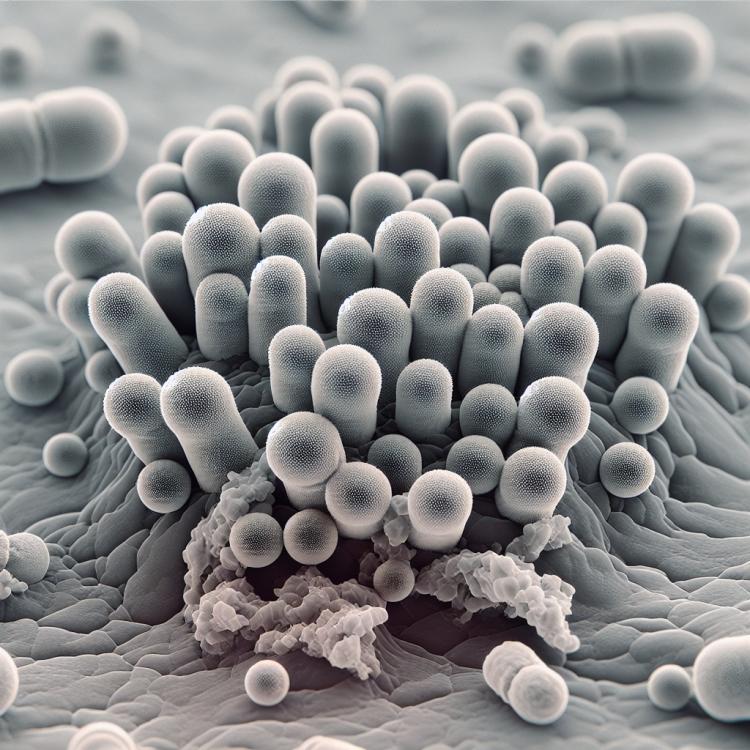
Diphtheria: causes, symptoms, and treatment methods
Definition of diphtheria
Diphtheria is an infectious disease caused by the bacterium Corynebacterium diphtheriae. The pathogen produces an exotoxin that causes the formation of a characteristic grayish film on the mucous membranes of the respiratory tract. Diphtheria is characterized by high infectivity and potential danger to the lives of patients, especially children and individuals who have not been vaccinated.
Risk factors for diphtheria
Risk factors for the development of diphtheria include the possibility of contact with an infected person or a carrier of the Corynebacterium diphtheriae bacteria. This can occur during close interactions or through coughing, kissing, and shared toys. Children who are not vaccinated against diphtheria, as well as people with weakened immune systems or those living in unsanitary conditions, are particularly at risk.
- Unvaccinated children: children who have not been vaccinated against diphtheria are at an increased risk of contracting the Corynebacterium diphtheriae bacteria.
- Close contact with an infected person: interaction with a person suffering from diphtheria or close contact with a carrier of the bacteria can lead to infection.
- Unfavorable hygiene conditions: living in a contaminated environment, lack of clean water, and inadequate hygiene create favorable conditions for the spread of the bacteria.
- Weakened immunity: people with weakened immune systems are more susceptible to infections, including diphtheria.
- Travel to endemic areas: trips to regions with high diphtheria incidence may increase the risk of infection.
Manifestations of diphtheria
Diphtheria primarily manifests on the mucous membranes of the throat, nose, and respiratory pathways. Symptoms may include a throat covered with a grayish-white coating, difficulty breathing, wheezing, and coughing. Patients may experience general weakness, fever, swelling, and lymphadenopathy. In some cases, the toxins released by the bacteria can cause weakening of the cardiovascular and nervous systems, leading to serious complications.
- Coating in the throat: the throat is covered with a grayish-white coating, which may lead to difficulty swallowing and breathing.
- Difficulty breathing: patients may experience breathing difficulties due to inflammation of the airways.
- Wheezing and cough: the appearance of wheezing and cough is usually one of the first signs of diphtheria.
- General weakness: patients may experience general malaise and weakness due to body intoxication.
- Lymphadenopathy: swelling and inflammation of lymph nodes may also be observed in diphtheria.
Expert opinion on the treatment of diphtheria
The experts’ opinion on diphtheria treatment highlights the importance of early diagnosis and immediate administration of diphtheria antitoxin and antibiotics. The use of diphtheria therapy aids in combating the toxins released by the bacterium Corynebacterium diphtheriae.
Experts also emphasize the significance of supportive therapy to eliminate complications and improve the overall condition of the patient. An important step in treatment is ensuring adequate nutrition, hydration, and rest for patients with diphtheria, especially in cases where the disease leads to serious complications.

Methods of diagnosing diphtheria
Diagnosis of diphtheria includes a clinical examination of the patient and laboratory methods of investigation. The doctor assesses symptoms such as the presence of a grayish coating in the throat area, breathing difficulties, and other characteristic manifestations. To confirm the diagnosis, a bacteriological examination of throat and nose swabs for the presence of Corynebacterium diphtheriae is conducted. Laboratory tests allow for the identification of the characteristics of the bacteria and their sensitivity to antimicrobial drugs, which helps the doctor choose the most effective treatment for the patient.
- Clinical examination: The doctor assesses symptoms of diphtheria, such as the presence of a grayish coating in the throat and difficulty breathing.
- Bacteriological examination: An analysis of throat and nasal swabs is conducted to check for the presence of Corynebacterium diphtheriae.
- Laboratory tests: These tests allow for the identification of bacterial characteristics and their sensitivity to antimicrobial drugs.
- Immunoserological methods: These may be used to detect antibodies against the bacteria, helping to confirm the diagnosis of diphtheria.
- Histological examination: In some cases, a biopsy of tissues may be required for further analysis.
Methods of treating diphtheria
- Antibiotic therapy: The use of antibiotics for the effective destruction of the bacterium Corynebacterium diphtheriae.
- Antitoxic serums: The use of special serums aimed at neutralizing the toxins produced by the bacterium and preventing possible complications.
- Supportive therapy: Conducting measures to reduce airway edema, maintain normal respiratory function, and control the cardiovascular system.
- Intensive medical care: Providing specialized assistance to manage severe cases of diphtheria and prevent complications.
- Monitoring condition: Continuous observation of the patient’s condition, monitoring disease indicators and the effectiveness of the ongoing treatment.
Measures for the prevention of diphtheria
- Vaccination: Conducting immunization of children and adults in accordance with the recommendations of the vaccination program.
- Mandatory vaccinations: Including the diphtheria vaccination in the standard calendar of mandatory vaccinations to protect the population.
- Preventive vaccination: Providing preventive vaccinations for individuals who may have an increased risk of contact with infected individuals.
- Compliance with hygiene rules: Regular hand washing, maintaining cleanliness in public catering establishments and public places.
- Awareness campaign: Conducting educational events for the population about diphtheria, its symptoms, prevention, and the importance of vaccination.